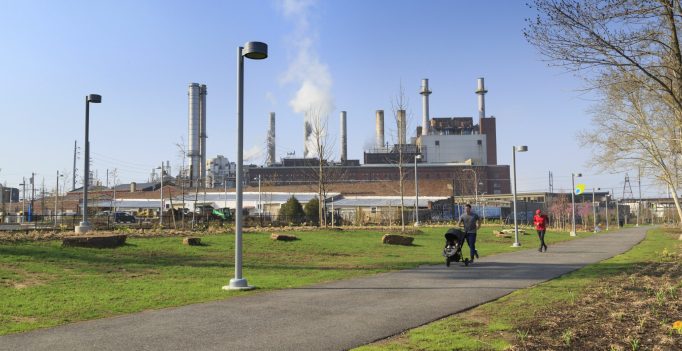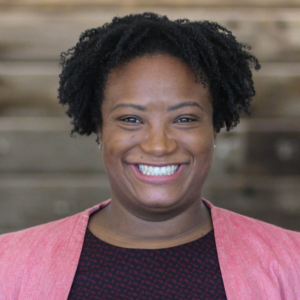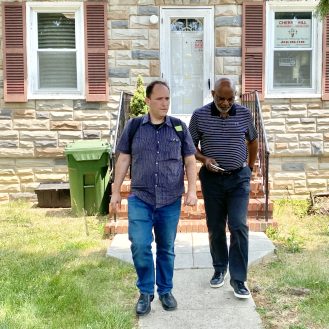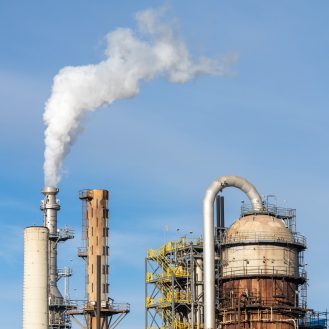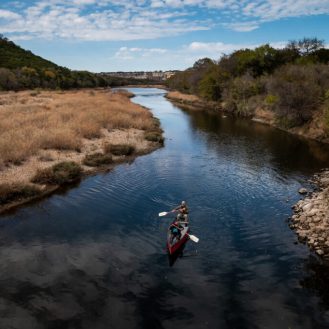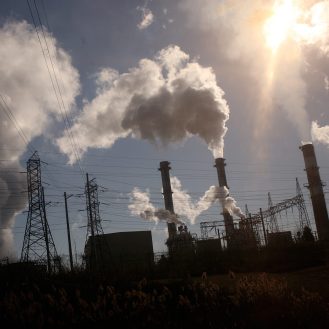For Leticia Nogueira, it started with the frogs.
As a grade schooler visiting her grandfather’s farm in her native Brazil, she and her family would stay up listening to the amphibians croak through the night. By the time she was a teenager, those trips to the farm were notable only for their profound silence.
“We couldn’t hear frogs anymore,” said Nogueira, who’s now a researcher with the American Cancer Society. “I would ask around and it seemed that it was a very well known fact that the climate was changing and it was impacting the environment and the living creatures around it.”
So began a lifelong interest in climate change that has, in recent years, taken a twist: Nogueira is part of a cohort of scientists working in behavioral medicine who are urging their peers to study potential linkages between the adverse health effects of climate change and long-standing inequities in patient care driven by factors such as bias, income inequality and structural racism.
Nogueira is aware that those areas of study don’t have a long history of interacting, but she believes that may change once researchers begin to see connections in what at first may appear to be tenuous links.
“More people understand and then they can connect with their lived experiences,” Nogueira said in a recent interview. “Then you can galvanize people to act, which is why I do what I do. I want to walk the talk. So I will show the data because it activates researchers.”
One example of increasing that understanding through data, according to Nogueira, is the study of the lingering effects of redlining—the decades-long practice through which banks denied home loans to Black Americans who lived in certain neighborhoods. Loan officers often identified those communities by marking them off with red lines on their maps.
“Those maps became a clear map of how historical racist practices have long-term effects,” Nogueira said.
Those effects, she said, include the undervaluing of real estate in Black neighborhoods, racial residential segregation, and disinvestment in infrastructure, including green space, housing stock, road maintenance, transportation services, public education, garbage collection and employment.
Those issues, she said, led to a concentration of psychosocial stressors and created barriers in access to health resources, including increased exposure to alcohol and tobacco outlets and lower access to healthy foods.
That, in turn, led to an increased prevalence of chronic diseases in these communities, she said, including diabetes and cardiovascular diseases.
“Those chronic health conditions can make you just more vulnerable to the threats of climate change,” she said.
Just as one can trace an arc from redlining to chronic disease to climate change vulnerability, Nogueira said that her current research involves exploring links between the effects of climate change and cancer diagnoses.
Nogueria said she was laughed at when she told people she was researching climate change and cancer. But at an annual symposium hosted by the University of Pennsylvania’s Center of Excellence in Environmental Toxicology last month where she presented some of her research examining Hurricane Harvey and the flooding of refineries in Houston, she received applause.
Researchers and community members said the event—called “Climate Change and Human Health”—and symposiums like this one bring people together to sit to discuss the biggest health threat facing humanity, according to the World Health Organization.
Trevor Penning, director of the center, said that while climate change has established itself as a central aspect of the national conversation about public policy, it is still not adequately discussed as a matter of public health.
“What is on people’s radar screen is really being looked at from the issue of reducing the carbon footprint, the issues of sustainability, which are all important things,” Penning said. “But the connection between climate change and health is not getting as much publicity as it needs.”
Changing that, Penning said, may require researchers to begin reframing the discussion about climate change from a macro-level conversation about the effects of climate change on the planet, to a more granular examination of how global warming can impact an individual’s physical and emotional health.
That means more scientists investigating how the human body adapts to extreme heat or ways to help people become more resilient to the stress and anxiety caused by natural disasters or the toll of prolonged exposure to carcinogens after flooding.
Penning’s center is housed in the university’s medical school, and that’s no accident. The goal, he and others at the center said, is to bring together experts from across the health sciences.
One colleague, Marylin Howarth, director of community engagement for the center, said she believes it is also critically important to include community voices in this conversation because “we know that not everyone experiences climate change in the same way.”
“The lack of resilience in those communities, financial and otherwise, really puts them at a disadvantage,” Howard said, “and really highlights the need for governmental and other public support to allow them to feel whole in this process as they experience climate change disasters.”
Penning said climate change already affects people who live in the university’s backyard.
“You could say to them, ‘Well, why don’t they just move?’ And it’s not so easy,” he said. “I mean, what value does their property now have?”
Keep Environmental Journalism Alive
ICN provides award-winning climate coverage free of charge and advertising. We rely on donations from readers like you to keep going.
Who is going to buy a home, Penning asked hypothetically, after it has been flooded 10 times? How can one appraise a house located in the middle of a heat island?
“The property values are decreasing in vulnerable populations already and we need to fix their problems for them,” he said.
Meeka Outlaw, an organizer in the South Philadelphia neighborhood of Grays Ferry attending the symposium, said that her neighborhood was forgotten for many years. She cried as she talked about how she would leave the city for trips to the suburbs as a child, and how thick the air seemed when she returned. She would point to the flames and big clouds of steam from the refineries her community was sandwiched between, but her mom was not as excited as she was at the sight.
She talked about how she has asthma and so do many others in her community. Then there’s the neighbors who have been diagnosed with cancer or died of the disease.
This past summer Outlaw, who is a teacher and founded her own advocacy organization, took part in an effort to measure heat in urban heat islands.
“Grays Ferry is home,” said Outlaw, whose group is called Residents Organized for Advocacy and Direction. “It’s been my home for 44 years. It’s been the only home I have ever known.
“I don’t know what the pill is to fix it. But something has to be done.”




